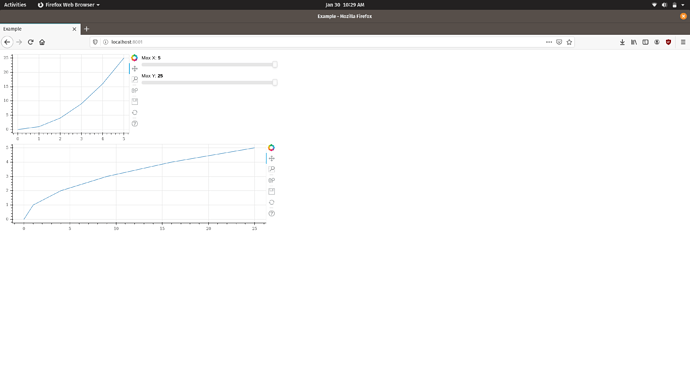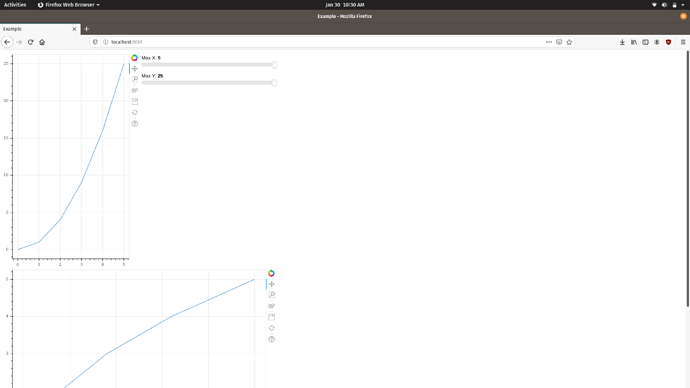Hello there,
we currently try to create a Dashboard using Bokeh graphs. The dashboard should run on a flask server and using bootstrap to get mobile responsiveness. We don’t use the Bokeh layout for this, because it seems that this system is not made for these kind of things. So our problem is with callbacks. We want to stay in python completely and avoid JS for as long as possible.
We created a Flask server which got its graphs from a Bokeh server (no idea if this is the right way). The problem now is that we cannot use bootstrap on the python-version of the site, because we cannot put the plots into divs (they “overflow” the defined divs). The other idea was using JS with embedding and components, but there we would have been using JS callbacks, which we don’t want. So, including the graphs is not a problem, but using python callbacks with the graphs and still using flask and bootstrap seems to be overly complicated. Or am I wrong? I hope, I am. Is there any way, this idea could work?
Any help is appreciated. If you need more info, put it down here.
Greetings,
Tobias

